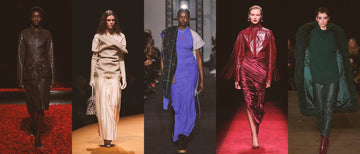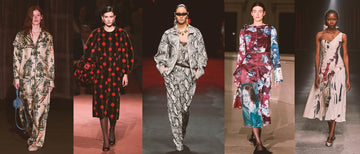History of Madras
Madras Plaid has always been distinctly characterized by a combination of unique features, which distinguish it from other fabrics, and specifically, other Plaids. To start, Madras is a hand-woven fabric, with pure Madras being 100% cotton. In the early days of Madras, after weaving, it would first be embroidered with elaborate and intricate patterns, which down the line throughout the evolution of the pattern, gradually turned into more refined prints. In these early stages, the red, blue, and black colours mentioned as part of the dyeing process, were commonly used, and became the most popular colours associated with the historical Madras. The technical process involved in the production of the popular cloth used a rice gruel as an adhesive along with boiling spring water to set the vegetable dyes used. An interesting result of this technique was the outcome of each region’s water leaving the fabric with a slightly different hue of the colours used, making them each unique.
Embed from Getty ImagesLooking at the history of the Madras Plaid, the best place to start is with its unique name. ‘Madras’ was the name of a town in South Eastern India, now known as Chennai - India’s fifth largest city, and capital of Tamil Nadu state. The name Madras was a shortened name for Madraspatnam, which was at the time a fishing village.
Going right back to the start of this plaid we need to go back to 1640, when the British arrived in the then, Madras Town. East India Company, a British company created to act as a trading body for English merchants, specifically intended for participation in the East Indian spice trade, built a factory in Madras for work, and a fort. During this time, the main local industry was weaving cotton, which resulted in the East India Company quickly adapting and getting involved in the textile industry. They brought English weavers over to Madras to settle nearby the fort and work in the factory. Whilst this explains the history of Madras and how the plaid became globally intertwined throughout far countries and the initial production of it, as a result of the British- India ties, the first woven Madras actually is reported to have been woven pre-1200.

Fast forward to the 1897’s, where the Madras fabric is claimed to have its first appearance in America - found in a Sears catalogue! This is likely one of the first and only pieces of historical proof that the fabric had made it to America at this time. If there was ever any doubt about how America responded to the Madras plaid, it can be guaranteed that it was a hit given the shortage of the fabric that emerged in 1919, as reported by The New York Times. After the plaid started taking off and growing in popularity across the US, by the 1930/40’s, many men had adopted the plaid as their go-to vacation wear, probably due to it being a lightweight and breathable fabric, combined with the array of summer, bright colours it was being produced in. Following on from this, the next big moment for the Madras plaid was in 1958, with the outbreak of a plaid scandal! This involved Brooks Brothers, a family run American clothing retailer, the oldest in the US, purchased a large amount of the Madras cloth, specifically 10,000 yards. It is said they were not informed that due to the delicate nature of the fabric if it was not washed correctly, the colours would tend to bleed. This resulted in a lot of unhappy customers and chaos as many people complained about fading colours of their newly purchased, expensive fabrics.
This leads on to the concept of, and then popular style of ‘Bleeding Madras’. This goes back to the origins of the Madras cloth, with the natural vegetable dyes that were then used by the weavers in India, commonly bleeding when damp. This meant the bright colours in the cloth would run and fade into new, unique designs of more muted colours. This became a popular selling point of the product eventually as no two pieces of the fabric were the same after bleeding. Brooks Brothers used this concept as an advantage after their plaid scandal. They decided that they would turn the angry customers believing they had bought expensive fabric that was poor quality and fading, and market the madras plaid as something very special and unique to them, with the bleeding plaids then becoming more in demand than before! Despite its extreme popularity in the mid-19th century, it is unlikely that you would find bleeding Madras popular now, likely due to the fact that most fabrics are produced chemically dyed and with non-bleeding fabrics.
REFERENCES
 |
Amy Davidson |
| Amy Davidson is a newly graduated textiles designer from Scotland, who loves to travel, the colour orange and hairbands in as many colours and prints as she could possibly get her hands on. Her favourite style of print to work with is anything that’s bold, colourful, and tropical! |







